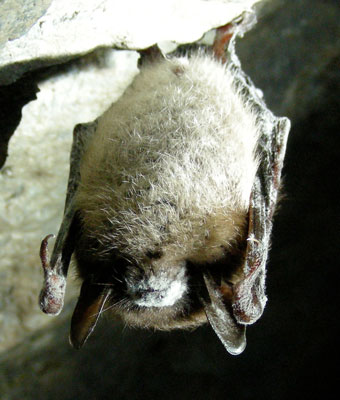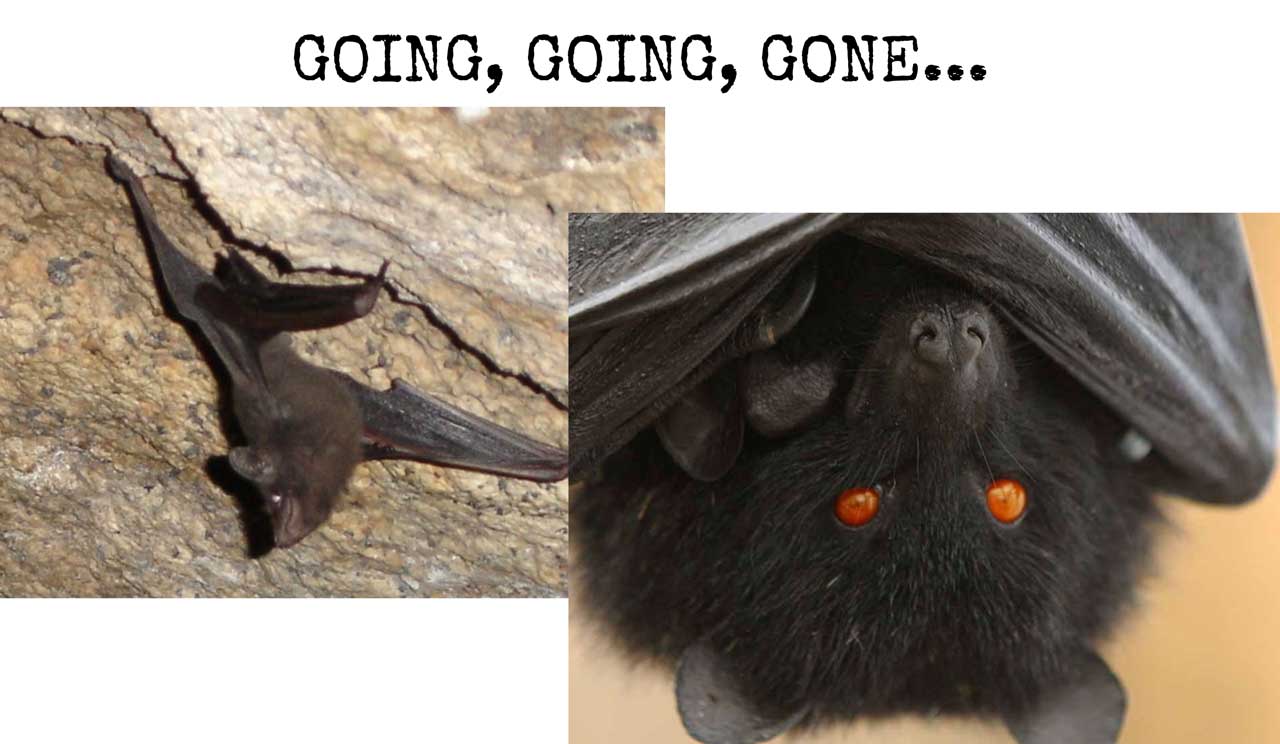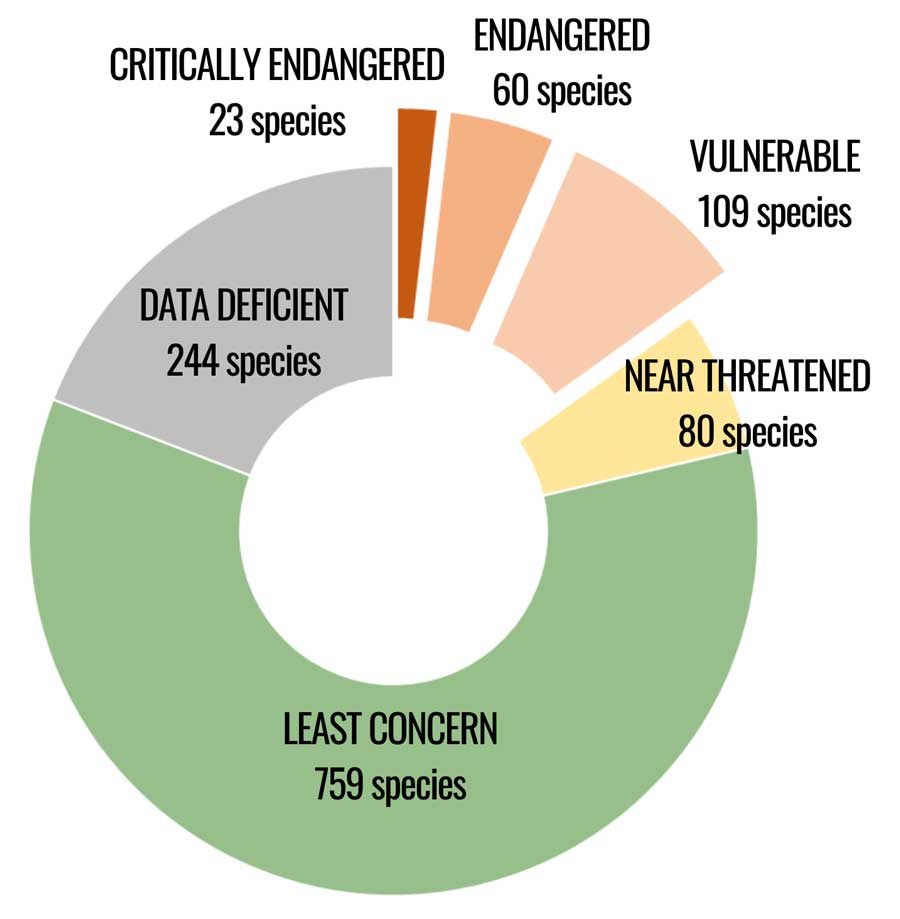In a previous post, I laid to rest some common myths about bats. In another I highlighted a few things that make bats awesome. Indeed, bats are weird and wonderful and rather essential to ecosystems and human wellbeing. But here’s the thing. They’re in trouble.
In 2020, 15 % of 1 275 extant species (not counting the five extinct ones) on the IUCN Red List are threatened. Meaning, they’re included in the three categories protruding from this donut chart. And 19 % of bat species are data deficient (there aren’t enough data for IUCN assessors to assign them to a risk category).
The images in the header on this post represent two of the most threatened species – the Seychelles sheath-tailed bat (Coleura seychellensis; photo by Justin Gerlach) and Livingston’s flying fox (Pteropus livingstonii; photo by James Morgan). Both are island endemics.
Here are three big problems bats are facing (though they’re hardly the only ones – for more see this paper).
1
Loss and deteriorating quality of habitat
The amount and quality of habitat for bats is declining worldwide, just like it is for most wild animals. We should be especially concerned about the loss of forests. In the tropics, rainforests are disappearing very quickly and, along with them their bats and other wildlife. The main cause is conversion to agricultural production (especially of commodities, such as beef, cocoa and palm oil). Meanwhile, pollutants in the environment are degrading the quality of habitat for bats (and other wildlife).
2
Hunting
This is mainly a problem in the tropics, where bats are killed for many reasons. People hunt bats for bushmeat, mostly in Africa and Asia-Pacific (a practice has nearly wiped out one species of fruit bat in the Mariana Islands). People cull bats due to human-wildlife conflict. A common one is the perception that bats destroy fruit crops. Indeed we may soon see one endemic fruit bat go extinct in Mauritius for this reason – with potentially disastrous consequences because this bat seems to be one of the only effective seed dispersers left in Mauritius. Finally, people kill bats out of simple fear or even for fun.
3
White Nose Syndrome (WNS)
This is a disease that is wiping out bats in North America. It was first discovered in Upper New York State in 2006, when large numbers of bats that were hibernating in caves suddenly died. US Fish and Wildlife officials were mystified, and the race was on to find out what was happening. Now we know the problem is a fungus (Pseudogymnoascus destructans) that thrives in cold caves and infects the skin of bats, especially on their wings and muzzles (as in this photo of an infected little brown bat (Myotis lucifugus).

It seems the fungus kills infected individuals in more than one way. For hibernating bats, it’s normal to arouse periodically (wake up to perform routine bodily functions such as drinking, grooming and urinating). When they do, the sudden and massive immune response to the infection may kill them. The fungus may also alter bats’ behaviour upon arousal, such as by causing them to groom more or to leave the cave and start flying around – possibly a response to the depletion of their stored fat, which they accumulate over summer to help them survive winter.
Since WNS was discovered, it has killed millions of bats and has spread in all directions. Several species that were once common are now endangered due to this disease. The WNS Response Team is racing to study and combat this threat to bats in North America. It maintains updated info on the disease and provides many educational resources.
As I said, these are just three of the conservation threats to bats, and as with so many aspects of the greater biodiversity crisis, addressing these issues is complicated because they’re stuck in a messy web of social, economic and political factors. Not least of which is the undeserved malignment of these amazing animals. That’s why I create blog posts on bats – in the hopes of contributing just a tiny piece of the public education puzzle that just might help sway readers to do learn more and do more.


